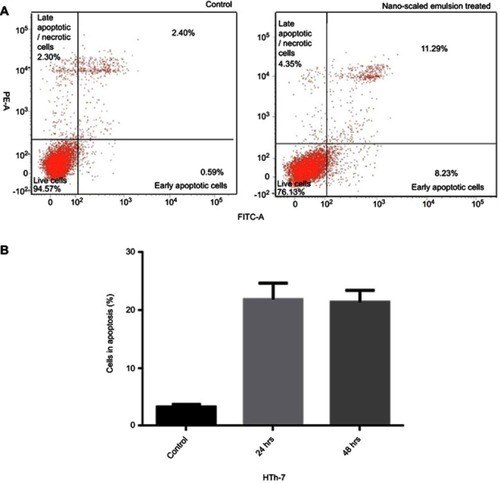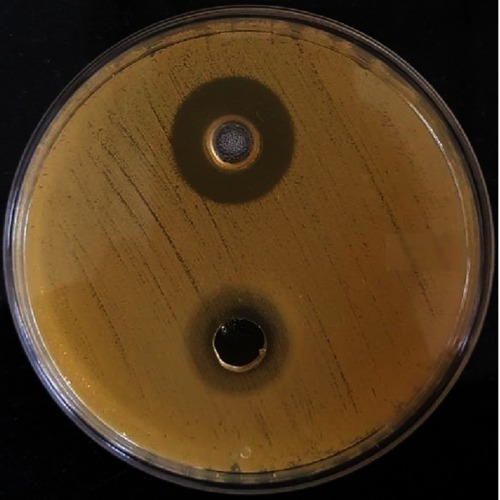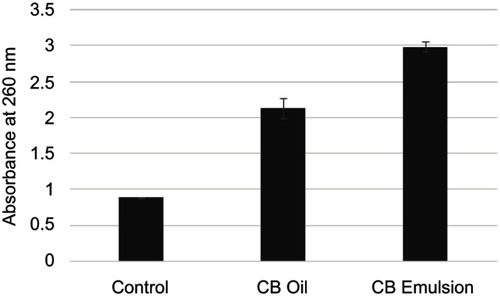Figures & data
Table 1 Clove bud oil formulations with Tween 20 (CB) and Tween 80 (CBO) surfactant, respectively, reported against their visual appearance
Figure 1 Images of formulations from 1:1 to 1:9 and 1:9 to 9:1, respectively, of the nanoscale emulsion of clove bud oil in Tween 20 and Tween 80 surfactant.
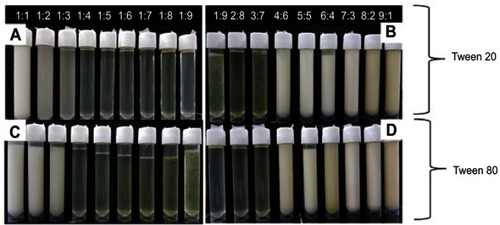
Figure 2 Ternary phase diagram constructed using clove bud oil, Tween 20, and 80, respectively, and water showing oil/water microemulsion region varying oil:surfactant ratio from 1:1 to 1:9 (left), and from 1:9 to 9:1 (right) for both Tween 20 and Tween 80.
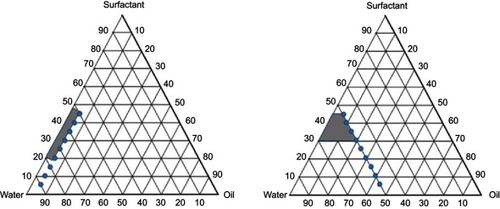
Figure 3 Droplet size distribution of the optimized formulation CB-4 (clove bud microemulsion formulation with oil: surfactant [Tween 20] ratio of 1:4) showing the particle size in the nanometer range using dynamic light scattering technique.
![Figure 3 Droplet size distribution of the optimized formulation CB-4 (clove bud microemulsion formulation with oil: surfactant [Tween 20] ratio of 1:4) showing the particle size in the nanometer range using dynamic light scattering technique.](/cms/asset/d554db14-f5f2-4e1e-bc3e-9720ece5b82a/dijn_a_12191013_f0003_c.jpg)
Figure 4 Variation of pH with oil:surfactant ratio (1:1 to 1:9) for the oil-based nanoscale emulsion in Tween 20 surfactant.
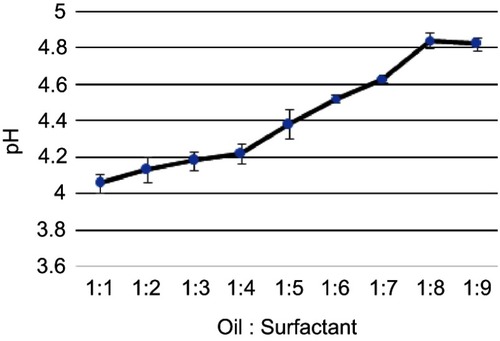
Figure 5 Variation of absorbance measured by the UV-Spectrophotometer with oil:surfactant ratio (1:1 to 1:9) for the oil-based nanoscale emulsion in Tween 20 surfactant.
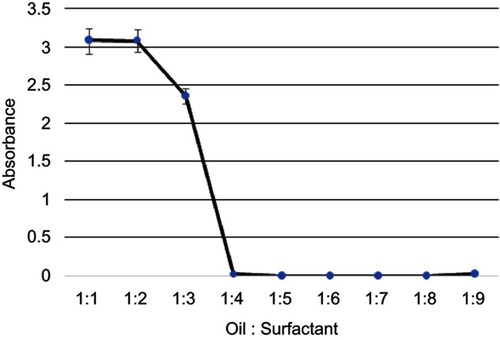
Figure 6 Variation of viscosity measured by the Brookfield viscometer with oil:surfactant ratio (1:1 to 1:4) for the oil-based nanoscale emulsion in Tween 20 surfactant.
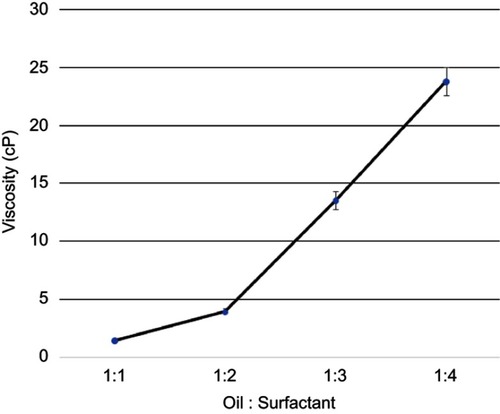
Figure 7 Effect of treatment with clove bud microemulsion on cell viability of Hek 293 (A) and HTh-7 (B) after 48 hrs incubation by MTT assay. (*P<0.05 compared with respective control).

Figure 8 (A and B) Colony formation assay showing significant decrease of HTh-7 cells on treatment with microemulsion CB-4 (clove bud oil: Tween 20 ratio of 1:4; right), as compared to untreated control (left) indicating antiproliferative effect. (*P<0.05 compared with respective control).
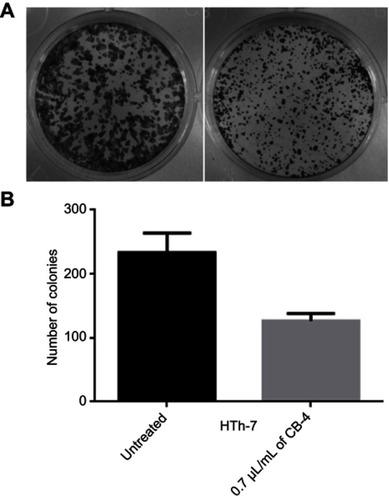
Figure 9 Effect of treatment with clove bud microemulsion at 0.7 µL/mL, 48 hrs against HTh-7 cells, in comparison with control using Annexin V-FITC/PI assay showing later stage apoptosis and early necrosis.
